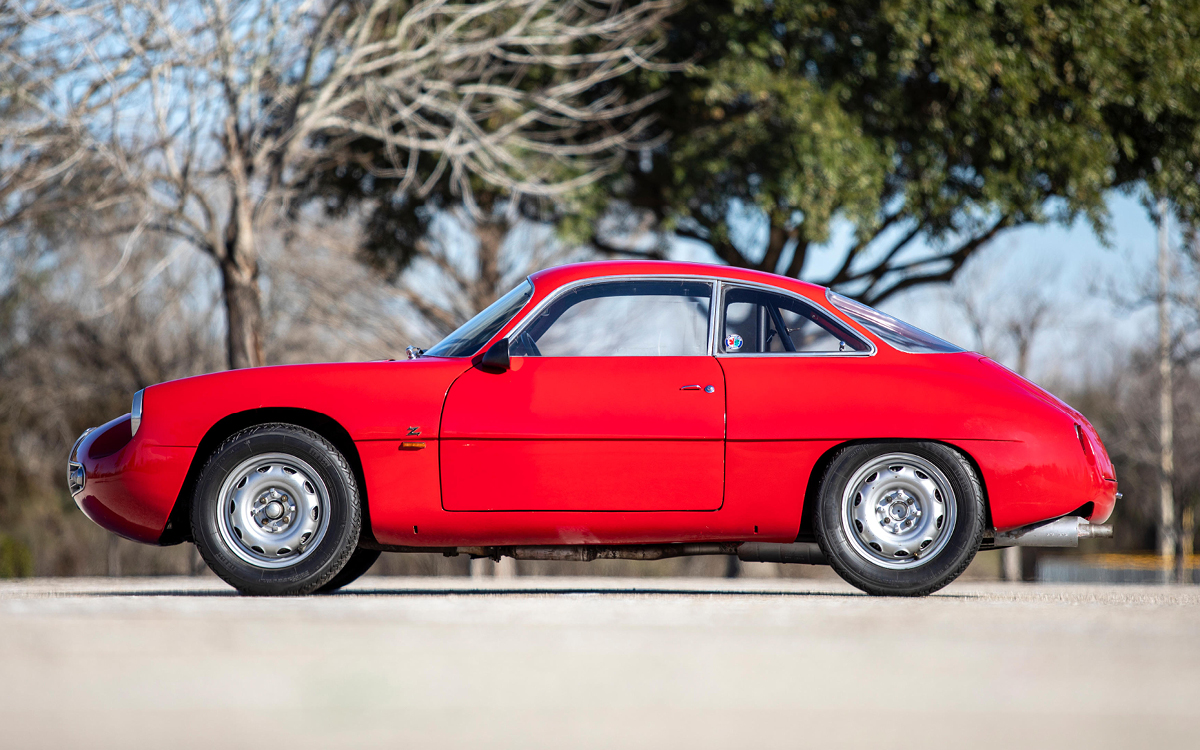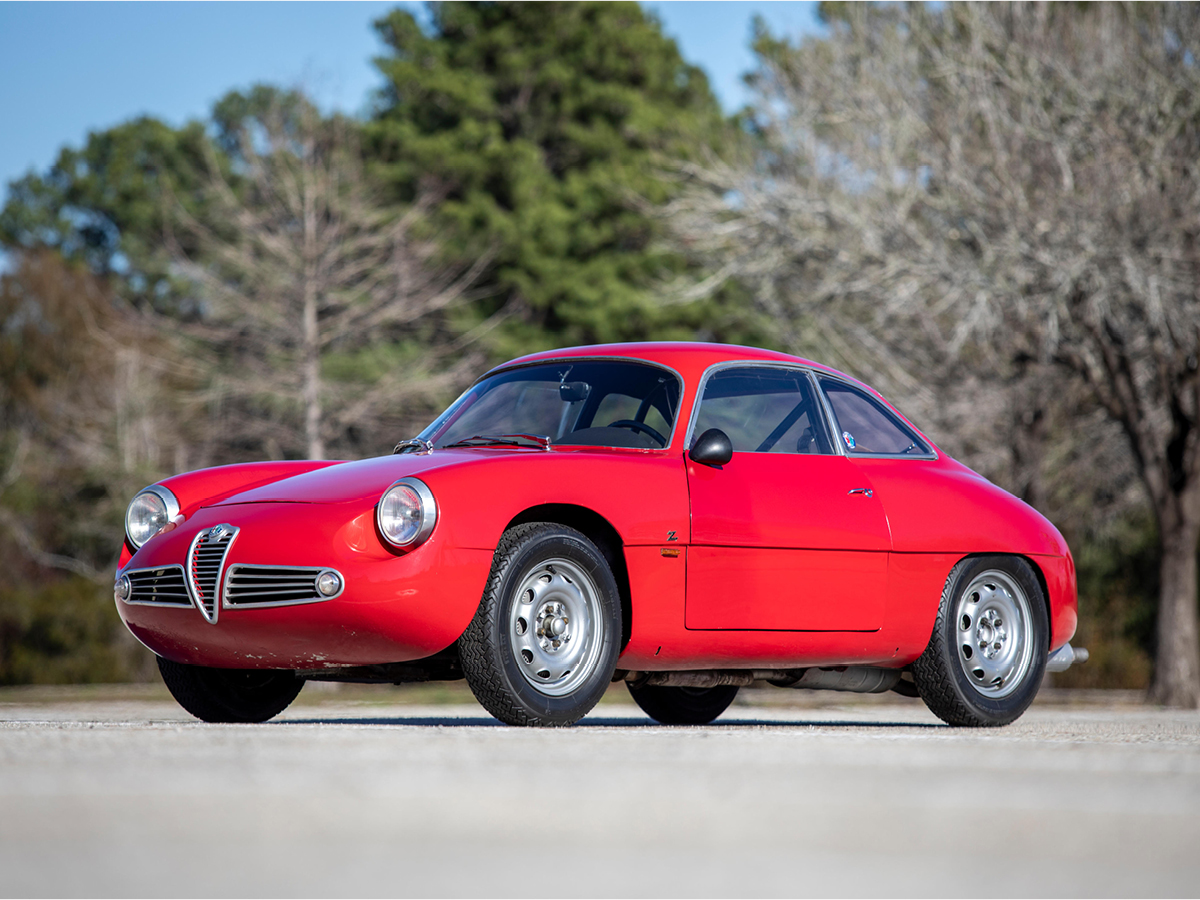A Tiny Zagato Masterpiece with a Big Heart
If you like a good “silver lining” story, you’ll appreciate the 1960-1962 Alfa Romeo Giulietta SZ. The “Z” on this tiny road/race sport coupe stood for Zagato, and it all started with new body work crated for a wrecked racecar. Customers asked Zagato to make duplicates, and Alfa Romeo subsequently stepped up to commission a larger though still limited-production run.
The resulting 1960 Alfa Romeo Giulietta SZ is the car you see here. It is on offer at the Bonhams Amelia Island auction on February 29, with a pre-sale estimate of $350K-$400K. This won’t be the only opportunity to bid one of these rarities at the Amelia; Gooding & Company has one, too, also in red, with a pre-sale estimate of $400K-$500K.
The Original “Sport Compact”
Before diving into the Alfa Romeo Giulietta SZ’s details, a bit of Alfa history is in order, including what was under the SZ’s sleek aluminum skin. Prior to WWII, Alfa Romeo had been a maker of high-end, limited-production sports and race cars, much like Ferrari was after the war. In the Fifties, Alfa transitioned into a mass producer with the 1954 Giulietta series of sedans and coupes.
Alfa built the Giulietta around unitized body construction for low weight and high strength. The car used double-wishbone independent front suspension, and the solid rear axle used a sophisticated, well controlled coil-spring suspension at a time when many other cars, including Ferraris, still used a solid axle on leaf springs.
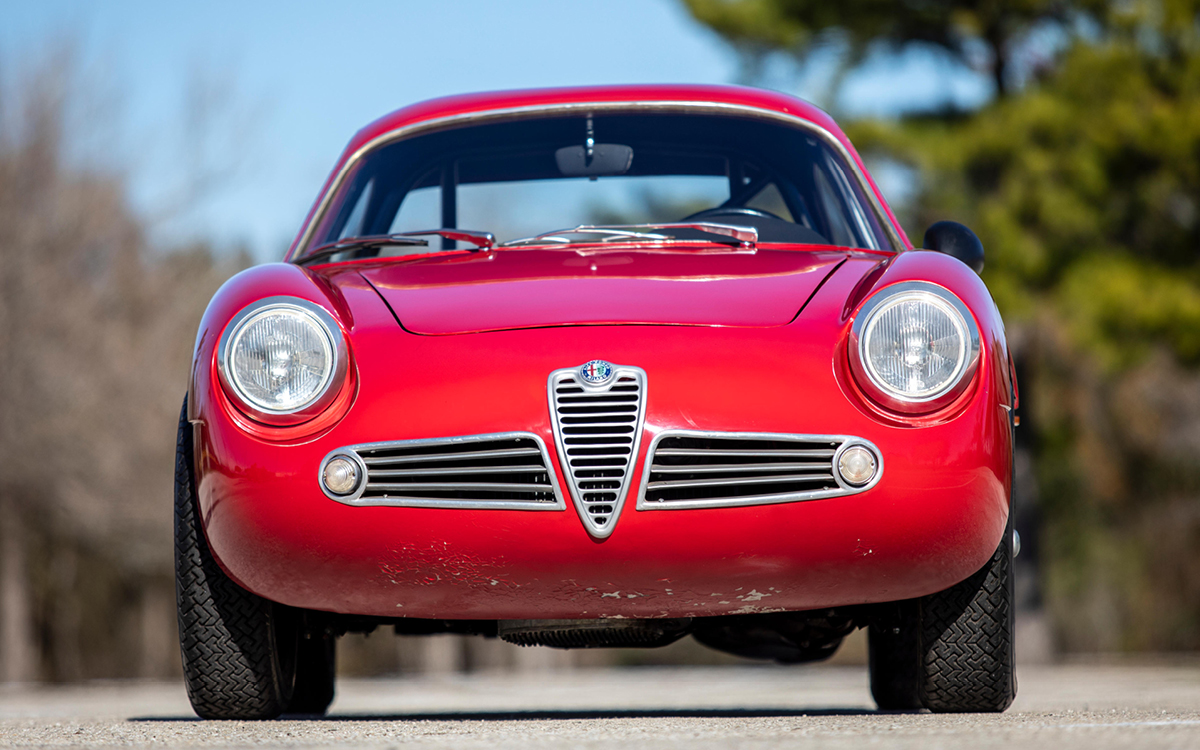
High-Revving Jewel
Alfa’s 1.3-liter DOHC inline four-cylinder engine was more advanced than a small car needed in postwar Europe, and it held racing potential. The Giulietta Sprint’s version had 80 horsepower, while the Sprint Veloce version used higher compression and two Weber carburetors instead of one to give 90 horsepower. At the time, a Porsche 356 came standard with 60 horsepower.
While BMW has long received credit for inventing the modern compact sport coupe with the 1602/2002 models in the Sixties, the Giulietta, known for its highly engaging driving spirit, got there a decade before. The coupe version, called the Sprint, was a looker thanks to a body design from Carrozzeria Bertone. And, of course, the Giulietta Spider remains one of the world’s most charming roadsters from the period.
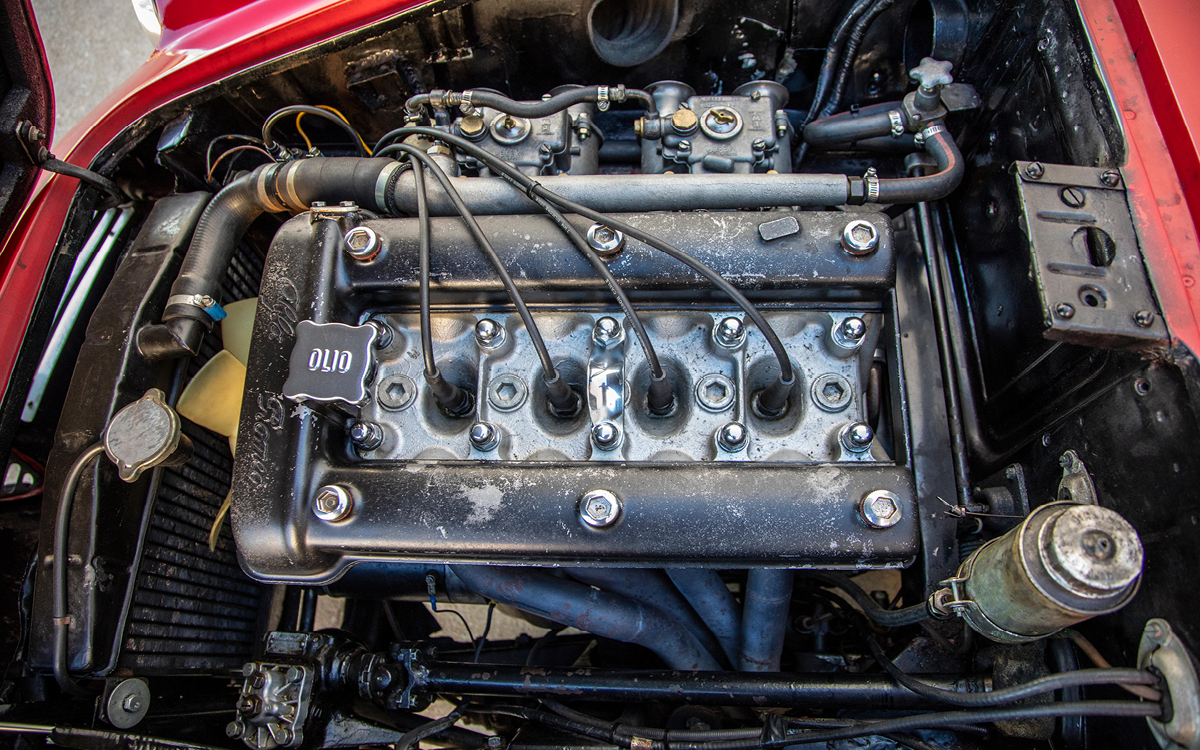
Racers and Designers Take Notice
The Giulietta opened itself to interpretation by the period’s renowned designers and coachbuilders. (The Spider was a Pininfarina creation.) That brings us to the “accident” noted above. In 1956, a gentleman racer named Massimo Girolamo Leto di Priolo crashed his Alfa Romeo Giulietta Sprint Veloce racing in the Mille Miglia, just four days after taking delivery.
Finding that Alfa would have charged quite a bit to repair the car, di Priolo instead took the car to Zagato. You may be familiar with Zagato’s long affiliation with Aston Martin, which has produced several limited-production specials.
Ugo Zagato was barely 30 when he started his own design and coachbuilding company in Milan in 1919. He had left an aircraft manufacturer and set his sights on transferring lightweight construction techniques to automobiles. It didn’t take long for racecar builders, including Alfa Romeo, to come calling. Zagato is still at it. In early 2024, the company unveiled the stunning Twin Tail, inspired by late-Sixties Le Mans racers and built around the mid-engine Alpine A110 that, sadly, we do not get in the U.S.
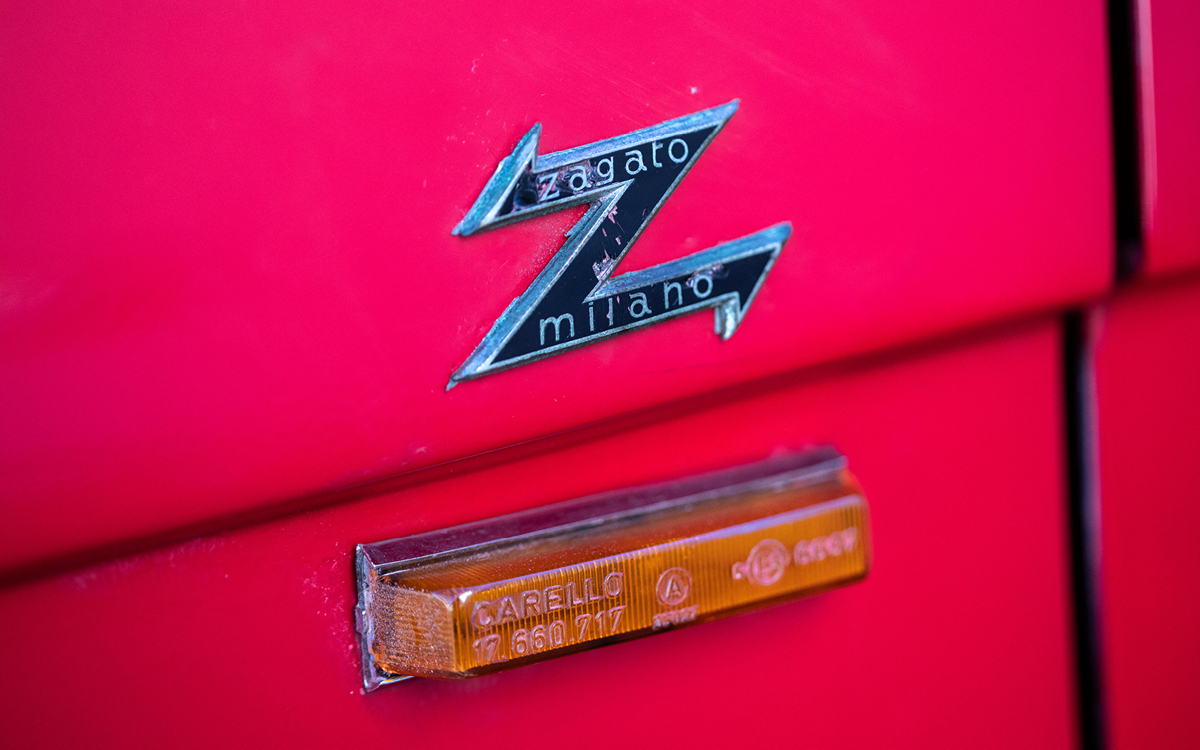
A New Star Rises from the Wreckage
Zagato’s craftsmen peeled away the bent sheetmetal from di Priolo’s Alfa but retained the structure beneath. The car they built was far sleeker and lighter than the factory model. As a result, it was faster than even the rare factory competition Giulietta Sprint Veloce.
Other racers noticed and requested Zagato re-body their Giuliettas the same. Zagato obliged by making about 15, calling them “SVZ.” Alfa Romeo also liked the SVZ and commissioned a limited run based on the Giulietta Spider’s shorter wheelbase. That became the SZ.
The SZ used thin-gauge aluminum body panels, Plexiglas side windows, and a relatively sparse interior to keep vehicle weight to about 1,650 pounds, about 250 less than the stock Giulietta Sprint. The engine was tuned to give 100 horsepower or up to 115, and the car was upgraded, like the Bertone-designed Giulietta Sprint Speciale, to a five-speed transmission over the Giulietta’s four-speed. A higher-capacity fuel tank was suitable for racing.
Ultimately, a planned run of 100 SZs to certify the car for racing bloomed into 200 cars to meet demand. About 30-40 of those were “coda tronca” models with a longer, sharply cut off tail for better aerodynamics. By comparison, Alfa and Bertone made 2,800 Sprint Speciale models.
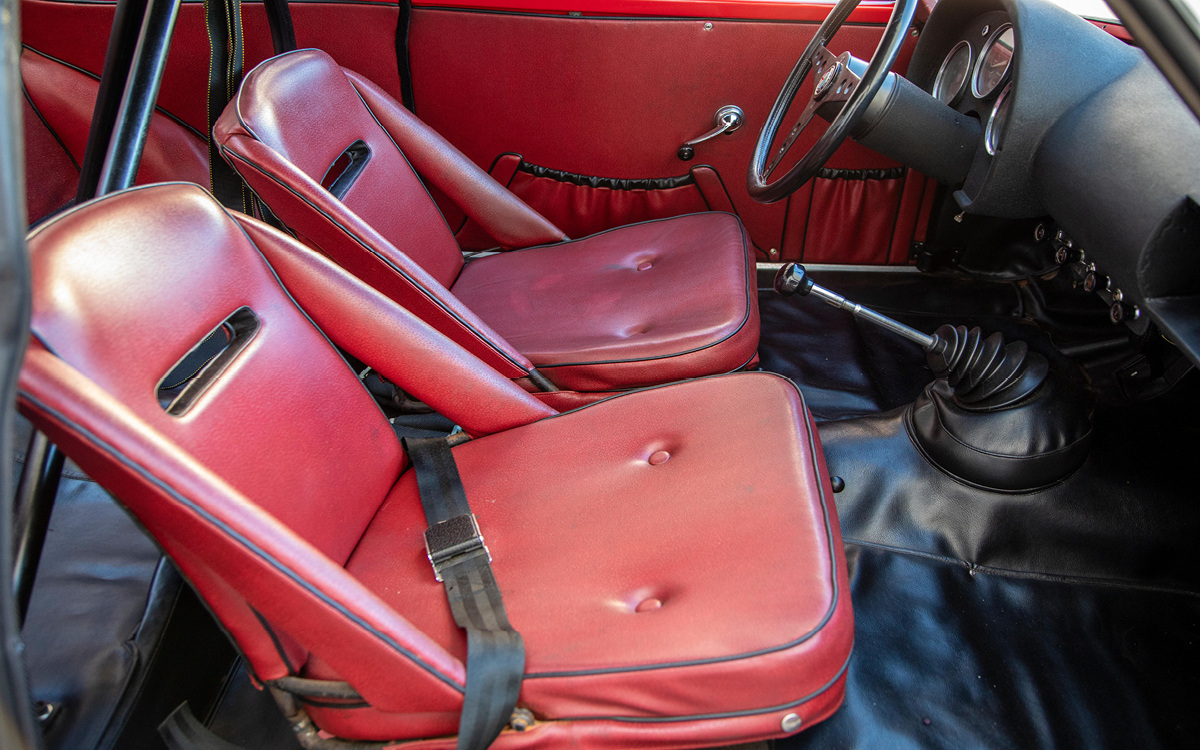
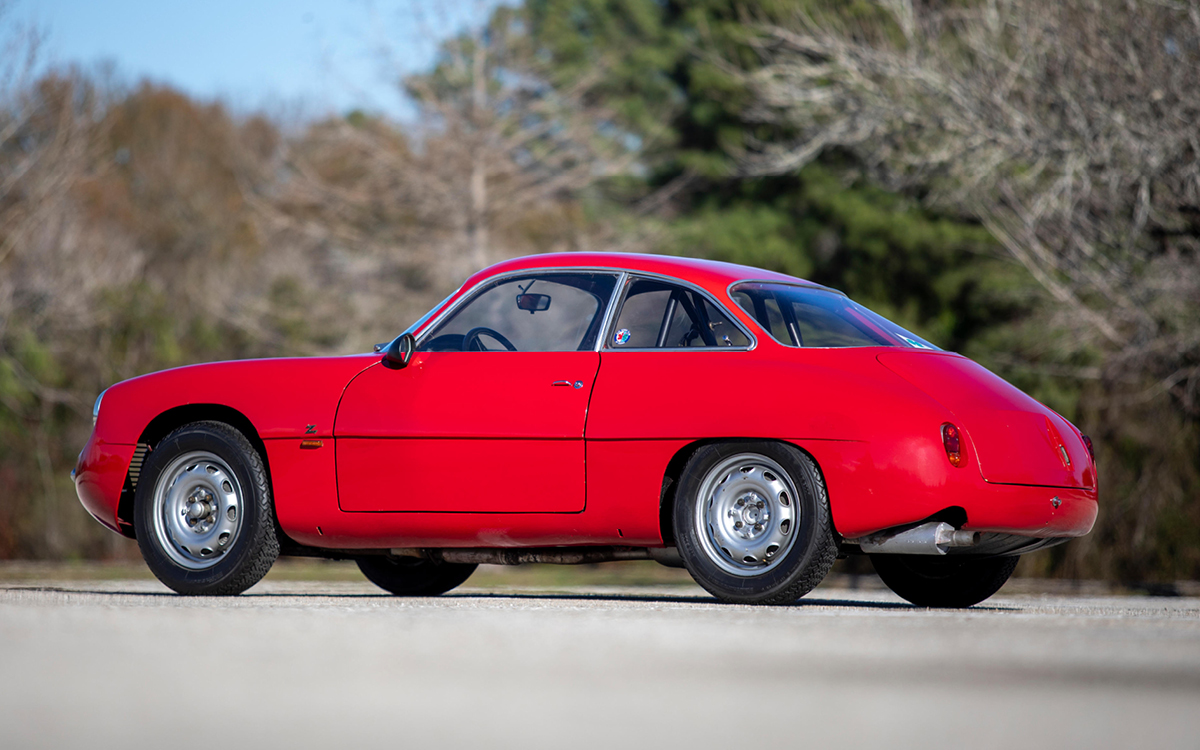
Beating the Big Dogs
The Giulietta SZ quickly established itself as a “giant killer,” with the speedy little Alfas winning a string of victories at Monza, the Grand Prix of Naples, and the Targa Florio. The Giulietta SZ offered by Bonhams was sold to an experienced racer who drove the car competitively in several events.
The Alfa remained in Italy through the 1970s. Along the way, it acquired Alfa’s 1,750-cc GT Veloce engine and a repaint. The SZ came to the U.S. around 1979, and one of its owners entered it in the 1980 Monterey Historic Automobile Races at Laguna Seca. Following years as a display car, it was recently serviced and recommissioned for the road.
The Alfa Romeo Giulietta SZ offered by Gooding & Company also has some race history and more recently has been used as a road car.
Can’t decide between the two? Bid on a set of near-twins!
